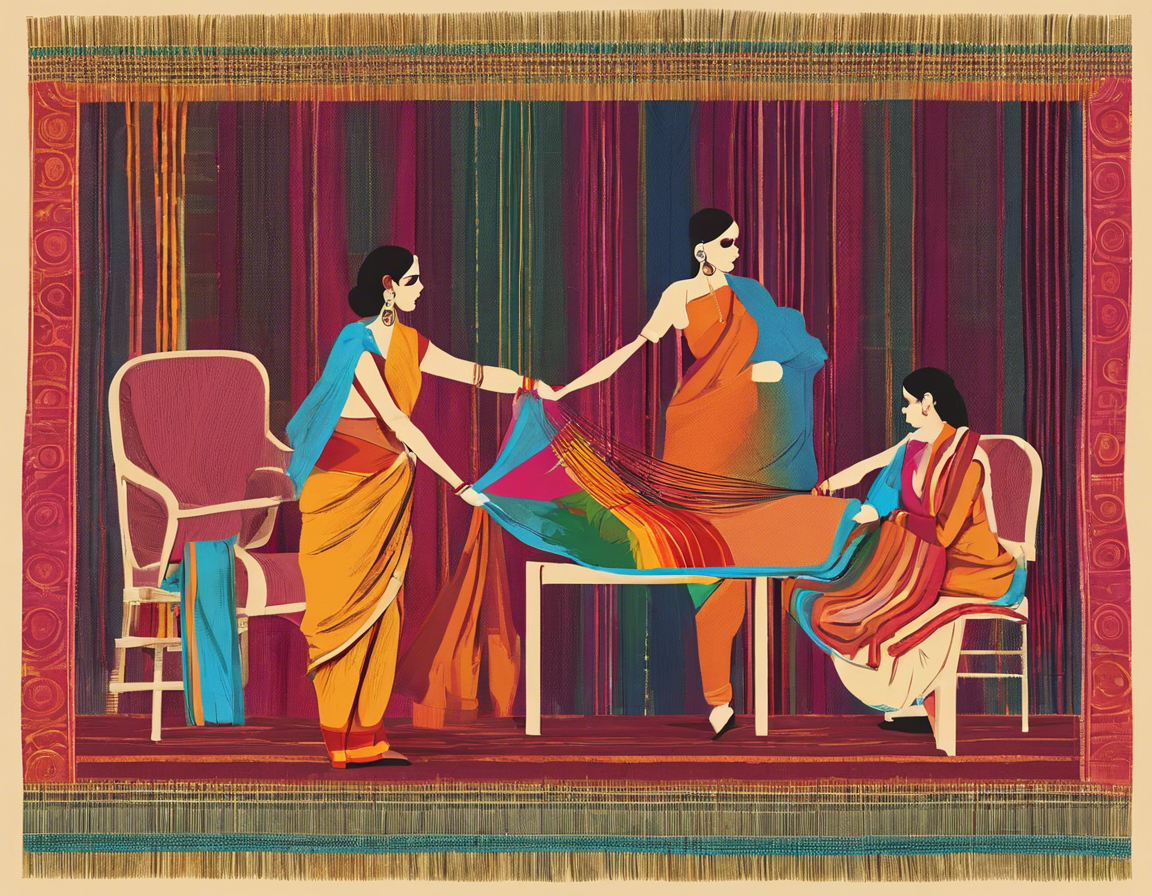August 7th marks National Handloom Day in India, a day dedicated to celebrating the rich cultural heritage and craftsmanship of handloom weavers. This annual observance serves as a reminder of the importance of traditional weaving techniques and the need to support the sustainable livelihoods of artisans. Handloom fabrics are not just textiles; they are a testament to centuries-old weaving traditions that have been passed down from generation to generation. In this blog post, we will delve into the significance of National Handloom Day, the art of handloom weaving, and the reasons why we should all support this vital industry.
Understanding the Significance of National Handloom Day
National Handloom Day was established in India on August 7th, 2015, with the aim of honoring the handloom weavers and promoting the handloom industry. This day was chosen to commemorate the Swadeshi Movement launched in 1905, which aimed at reviving domestic products and production processes. By celebrating National Handloom Day, we pay tribute to the artisans who have dedicated their lives to preserving the cultural and textile traditions of the country.
The Art of Handloom Weaving
Handloom weaving is a historic craft that involves the interlacing of yarn to create fabric. Unlike mechanized loom weaving, handloom weaving is a labor-intensive process that requires skill, patience, and precision. One of the distinguishing features of handloom fabrics is the intricate designs and patterns that can be created, showcasing the creativity and expertise of the weavers.
Handloom fabrics are typically made from natural fibers such as cotton, silk, wool, and jute. These fabrics are known for their durability, breathability, and versatility, making them popular for a wide range of clothing and home furnishing products. The texture and quality of handloom fabrics set them apart from mass-produced textiles, giving them a luxurious and timeless appeal.
Reasons to Support the Handloom Industry
Preserving Cultural Heritage
Supporting the handloom industry is essential for preserving cultural heritage and traditional crafts. Handloom fabrics embody the rich and diverse textile traditions of India, reflecting the unique weaving techniques and designs of different regions. By supporting handloom weavers, we contribute to the sustainability of these artistic traditions and ensure that they are passed down to future generations.
Empowering Artisans
Handloom weaving provides employment to millions of artisans across India, especially in rural areas where livelihood opportunities are limited. By supporting handloom products, we help empower these artisans economically and socially. Fair wages and working conditions are crucial for sustaining the handloom industry and improving the quality of life for weavers and their families.
Promoting Sustainability
In an era dominated by fast fashion and mass production, the handloom industry stands out for its sustainable practices. Handloom weaving is a low–carbon footprint craft that uses natural fibers and non-mechanized techniques, making it environmentally friendly. Choosing handloom products over synthetic and mass-produced textiles helps reduce waste and promotes a more sustainable fashion model.
How to Support the Handloom Industry
Buy Handloom Products
One of the most direct ways to support the handloom industry is by purchasing handloom products. Whether it’s clothing, accessories, or home furnishings, opting for handloom items helps sustain the livelihoods of artisans and promotes traditional craftsmanship.
Spread Awareness
Educating others about the importance of handloom weaving and the value of handloom products can help raise awareness and appreciation for this art form. Support local initiatives, artisan cooperatives, and handloom clusters to further empower weavers and promote sustainable practices.
Celebrate National Handloom Day
Marking National Handloom Day in your community or organization can help draw attention to the significance of handloom weaving and the need to support artisans. Organize events, workshops, or exhibitions that showcase handloom products and engage with local weavers to learn about their craft.
Frequently Asked Questions (FAQs)
1. What is the significance of National Handloom Day?
National Handloom Day celebrates the cultural and artistic heritage of handloom weaving in India, honoring the artisans who have preserved these traditions for generations.
2. Why should we support the handloom industry?
Supporting the handloom industry helps sustain the livelihoods of artisans, preserve cultural heritage, and promote sustainable fashion practices.
3. How can individuals support the handloom industry?
Individuals can support the handloom industry by buying handloom products, spreading awareness about the craft, and celebrating National Handloom Day.
4. What are the benefits of handloom fabrics?
Handloom fabrics are known for their durability, breathability, and unique designs, making them high quality and versatile for clothing and home furnishing items.
5. How does handloom weaving differ from mechanized loom weaving?
Handloom weaving is a manual and labor–intensive process that involves traditional techniques and artisan skill, while mechanized loom weaving is automated and mass–produced.
In conclusion, National Handloom Day serves as a timely reminder of the cultural and artistic significance of handloom weaving. By supporting the handloom industry, we not only preserve traditions and empower artisans but also promote sustainability and ethical fashion practices. Let us all come together to celebrate the time-honored craftsmanship of handloom weavers and embrace the beauty of handloom fabrics in our lives.
